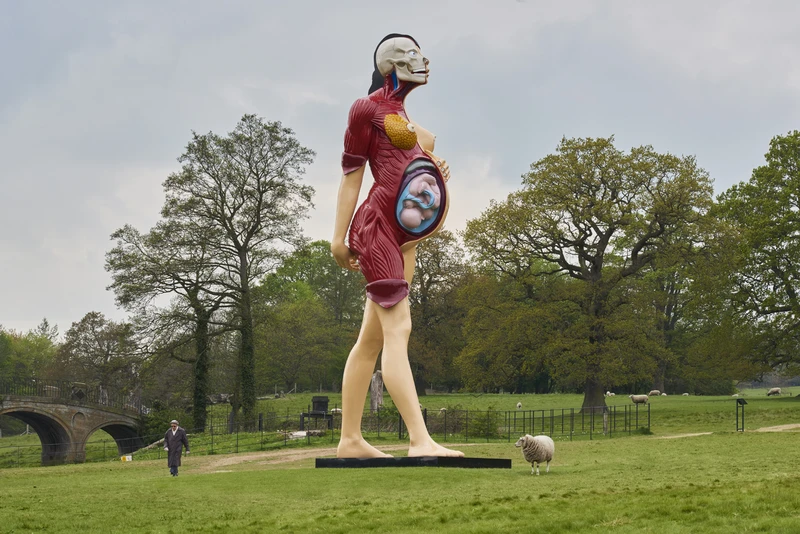Damien Hirst
13 Apr 2019-1 Sep 2024


Yorkshire Sculpture Park presents four major sculptures by Damien Hirst in the 18th-century Country Park.
‘The giant bronze sculptures at YSP are where they belong – they're just made for that setting.’
– Damien Hirst
Charity (2002-2003), Myth (2010), The Hat Makes the Man (2004-2007) and The Virgin Mother (2005-2006) came to YSP as part of Yorkshire Sculpture International (YSI), a festival of sculpture which took place across Leeds and Wakefield from 22 June until 29 September 2019.
Hirst's ten-metre- tall The Virgin Mother stands against the backdrop of the Lower Lake, a powerful presence in the landscape. Referencing the stance of Degas’s Little Dancer of Fourteen Years (c.1881), the sculpture’s cross-section reveals the foetus curled within the womb.
Charity, on display near the recently opened Weston building, is recognisable as based on Scope collection boxes which were commonly seen on British high streets between the 1960s and 1970s. A young girl wearing a calliper forlornly cradles a teddy bear and a donations box which reads ‘please give generously’. The work questions historic and outdated ways of depicting disability and seeking charity.
Outside The Weston, Myth presents a white unicorn with half of its skin flayed to reveal vibrant red, pink and yellow musculature and tissues. Hirst often takes religious or mythical figures as his subjects, unpicking and disrupting their familiar narratives. Horses have been an artistic subject for millennia and, referencing this tradition, Hirst’s unicorn stands high on a classical plinth. Like all works in this display, Myth makes a playful nod to art history.
Back towards Lower Lake, The Hat Makes the Man is based on a 1920 collage of the same name by Surrealist artist Max Ernst. Ernst’s work is comprised of cut-out images of hats absurdly reassembled in stacks with intentionally phallic-like supports. It is thought to have been inspired by Sigmund Freud’s book The Joke and Its Relation to the Unconscious (1905), in which Freud describes the hat as a symbol of repressed male desire. Hirst renders Ernst’s work in three dimensions, using bronze casts of wooden pallets as supports and thereby introducing the idea of sculptural collage or assemblage. As with The Virgin Mother, Hirst’s materials are hidden. In the former works, the bronze is painted to emulate plastic and with The Hat the casting precisely imitates painted wood. The artist thereby plays with the grandeur associated with bronze.